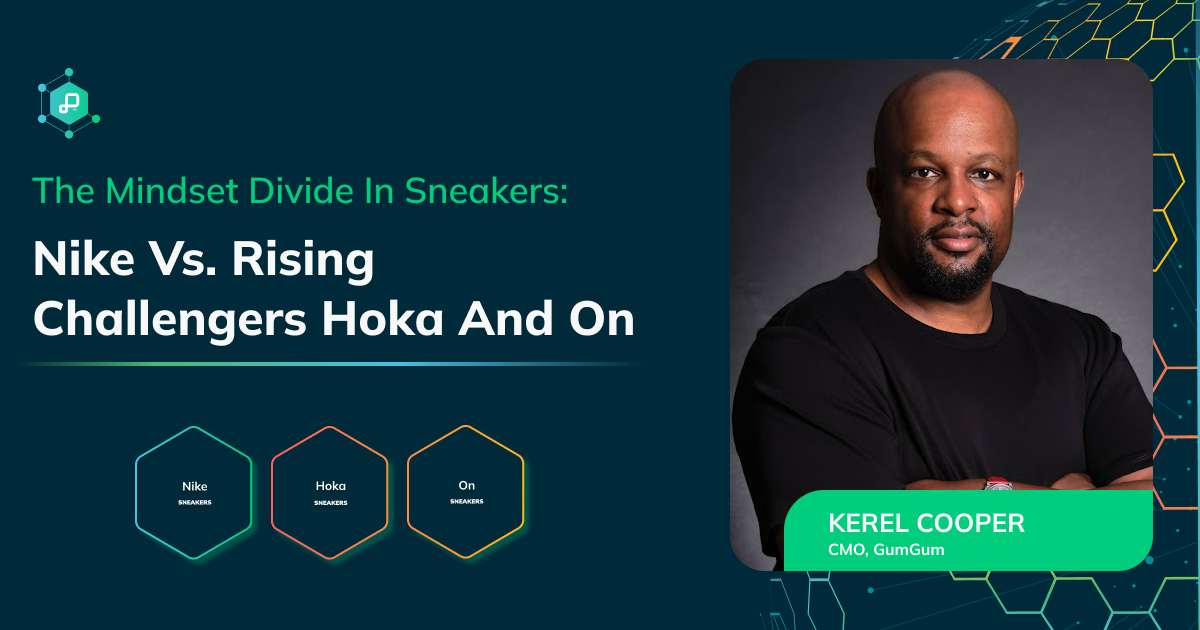There’s no question that the rise of streaming has revolutionized how people consume video and TV. As streaming platforms rapidly expand, they’ve not only delivered unprecedented access to high-quality content but also pulled audiences away from traditional broadcast and cable TV—and in doing so, reshaped expectations. Above all else, today’s audiences expect far and fewer interruptions in their viewing experience. So, where does this leave advertising?
At the same time, conventional ad formats—like pre-roll, mid-roll, and post-roll—are becoming more commonplace in the digital ecosystem. And while most online video is irrelevant to the present moment, GumGum is bringing contextual relevance to OLV, so that brands can connect with consumers within the right moment, in the right environments to build meaningful connections and powerful advertising.
Blend, Don't Break Viewing Experiences
Regardless of video formats, audiences are becoming more selective about their media experiences and brands are facing an ongoing challenge: how can they stand out in a crowded landscape without disrupting the viewer journey? To maintain effectiveness, advertisers must explore complementary, seamless formats that capture attention while reinforcing their message.
In this blog post, we’ll share how brands can drive visibility and engagement through GumGum’s new In-Video product suite. Rather than relying solely on ad breaks, In-Video offers a new layer of contextual storytelling by integrating brand messaging within content itself—helping advertisers build meaningful, non-intrusive connections with people online.
The Advertising Landscape: A Shift Towards Seamless Integration
The Evolution of Streaming
Streaming redefined how audiences consume content, offering on-demand access with fewer ad interruptions. The success of TiVo, Netflix, and early streaming platforms was built on a promise of control—watch what you want, when you want, with fewer or no ads.
But, as streaming matures, ad-supported models are resurging. Streaming has moved beyond its early days of being a premium, ad-free experience. Today, ad-supported models like Free Ad-Supported Streaming TV (FAST) and Advertising Video on Demand (AVOD) are growing at an unprecedented rate, with services like Samsung TV Plus, Roku, and LG Channels leading the charge. In fact, FAST viewership hours have increased by 95% year-over-year (Nielsen) and 66% of U.S. TV viewers now prefer ad-supported streaming over subscription-based models (eMarketer).
But, there’s only so much ad load platforms can introduce before viewers tune out. Plus, with streaming services becoming more expensive, there is pressure on publishers to monetize their content in many different ways to stay afloat and competitive. So what does that mean? More ads. This brings us back to the key challenge: how do you deliver effective advertising without disrupting the viewer experience? GumGum’s In-Video Suite is designed to solve this problem by creating ad placements that feel natural, engaging and seamlessly integrated into the content viewers are already watching.
The Problem with Traditional Ads
When viewers switched from cable to streaming, they expected a different advertising experience—fewer interruptions, more control and a less intrusive approach to brand messaging. However, many streaming platforms have struggled to strike the right balance, often replicating the traditional commercial break model that many consumers abandoned in the first place.
This has led to significant ad fatigue, where audiences either skip, ignore, or completely disengage from conventional ads. Repetitive break-based models are becoming less effective and with the rise of multiple streaming platforms, audiences have more options than ever to simply switch to a different service if they find an ad experience frustrating.
In-Content Advertising Works
The answer to this problem isn’t to eliminate advertising altogether—it’s to evolve how ads are delivered. Live sports and entertainment have already demonstrated the power of in-content advertising. Digital billboards, lower-third overlays on news broadcasts and sponsorship placements within stadiums have been successful for years because they allow brand messaging to exist within the content, rather than interrupting it.
The Opportunity for Brands
In-Video places brands inside the content, not in between it. With advanced contextual scene-by-scene targeting, this solution ensures that ad messages appear in the right moments and are fully aligned with the mood, sentiment and setting of the content. Plus, it allows for campaign extension, allowing advertisers to leverage untapped FAST and AVOD environments where their audiences may be present. This creates new branding opportunities while also ensuring a larger share of voice - rather than competing for limited ad breaks, brands can now stand out by creating their own unique moments of visibility.
What is In-Video?
GumGum’s In-Video Suite is a groundbreaking ad solution that integrates branded messages directly into streaming content. Unlike traditional ads that interrupt the viewing experience, In-Video ensures that brands become part of the content itself. This suite of ad units is designed to enhance brand visibility without disrupting engagement, making it a powerful tool for advertisers looking to reach audiences in a meaningful way.
Powered by GumGum’s patented overlay insertion technology, In-Video makes it possible to seamlessly embed brand messages into video content, ensuring maximum impact while preserving the integrity of the viewing experience.
How It Works
In-Video uses advanced AI-driven analysis to determine the most effective placements for branded messages, ensuring that ads feel like a natural part of the scene. Additionally, In-Video features QR code-enabled interactions, allowing viewers to engage with brands without pausing their content. This transforms brand messaging from passive awareness into instant action, giving advertisers the ability to drive conversions in real-time.
In-Video Spark
This format introduces animated overlays that appear at key moments within content. Rather than feeling like an intrusive ad, Spark reinforces the scene’s tone while also delivering seamless brand visibility. Brands can also integrate QR codes for interactive, shoppable experiences.
In-Video Spotlight
Spotlight is a picture-in-picture ad format that allows brands to showcase video assets without interrupting the main content. This format is particularly valuable for advertisers looking to repurpose existing video ads while maintaining viewer engagement.
In-Video Squeezeback
Squeezeback dynamically resizes the main video, creating space for brand messaging without pulling the audience away. This ensures high visibility while maintaining engagement, making it an effective format for driving brand recall and interaction.
No Breaks, All Gains: The In-Video Advantage
In-Video maximizes impact while respecting the audience’s experience. For publishers, it unlocks new revenue streams without increasing ad load. And for viewers, it keeps content immersive while making ads more relevant and engaging.
A More Natural, Less Disruptive Ad Experience
Because In-Video ads integrate into the content, they avoid the pitfalls of traditional ad fatigue. Viewers stay engaged, and brands maintain visibility without breaking the storytelling flow.
Extended Campaign Reach
In-Video allows brands to repurpose existing video and display assets, turning them into high-impact in-content ads. Instead of fighting for limited ad breaks, advertisers gain new opportunities to reach audiences in new and innovative ways.
Drive Real-Time Action
The inclusion of QR codes transforms brand placements into actionable, even shoppable moments. Viewers can engage with a brand in real-time, creating a seamless connection between awareness and conversion.
Conclusion: The Future of Streaming Ads is Here
Traditional ad breaks aren’t disappearing, but they are no longer the only option. In-Video represents the future of streaming advertising—where brands are part of the content, not an interruption. As advertisers embrace in-content advertising, they will unlock higher engagement, better recall, and a superior viewing experience.
Now is the time to think beyond the break.










